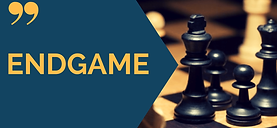
Training
"The Game of Chess is not merely an idle amusement; several very valuable qualities of the mind, useful in the course of human life, are to be acquired and strengthened by it, so as to become habits ready on all occasions; for life is a kind of Chess, in which we have often points to gain, and competitors or adversaries to contend with, and in which there is a vast variety of good and ill events, that are, in some degree, the effect of prudence, or the want of it. By playing at Chess then, we may learn:
1st, Foresight, which looks a little into futurity, and considers the consequences that may attend an action ...
2nd, Circumspection, which surveys the whole Chess-board, or scene of action: - the relation of the several Pieces, and their situations; ...
3rd, Caution, not to make our moves too hastily...."

Aims in opening play
Whether they are trying to gain the upper hand as White, or to equalize as Black or to create dynamic imbalances, players generally devote a lot of attention in the opening stages to the following strategies
Development
King safety
Prevention of pawn weakness
Piece coordination
Middlegame Training
The strategy required for middlegame play varies considerably. Some middlegame positions feature closed centres featuring maneuvering behind the lines, while other middlegames are wide open, where both players attempt to gain the initiative.
.
First,
if the kings are castled on opposite wings, and queens remain on the board, the position can be very violent, with both players aiming to assault the enemy king. Material considerations are often secondary to pursuing the attack, and it can even be advantageous to lose pawns in front of the enemy king in order to open up lines for the rooks and queen
.
Second,
positions where the pawn structure is static and locked, can also feature mutual attacks, since players often elect to play on the side where they have more space (playing on the side of the board in which their pawns are pointing). Time is often less of a concern in such middlegames, allowing lengthy maneuvers. Players attempt to strengthen their positions and weaken their opponent's. Both players need to be on the lookout for pawn breaks, and the possibility of taking advantage of the open files which may arise from them.
Third,
if one player has an overwhelming material advantage and is clearly winning, the stronger player can usually afford to violate several of the normal middlegame principles in order to trade down to an endgame. For example, trading queens even at the cost of a ruined pawn structure may be a viable option.


End Game Training
An endgame is when there are only a few pieces left. There is no strict criterion for when an endgame begins, and different experts have different opinions. "We cannot define when the middle game ends and the end-game starts
Three characteristics of an endgame:
-
Endgames favor an aggressive king.
-
Passed pawns increase greatly in importance.
-
Zugzwang is often a factor in endgames and rarely in other stages of the game.
Some problem composers consider that the endgame starts when the player who is about to move can force a win or a draw against any variation of moves
The game is not in the endgame if these apply:
-
Better development
-
Open files for attacking
-
Vulnerable king position
-
Misplaced pieces.